Sustainable shopping is more than a trend—it’s a necessary shift towards protecting our planet while still expressing personal style. Many fashion enthusiasts are now prioritizing eco-conscious choices without sacrificing their love for fashion. Here’s how you can join the movement, embrace sustainable shopping, and still look stylish.
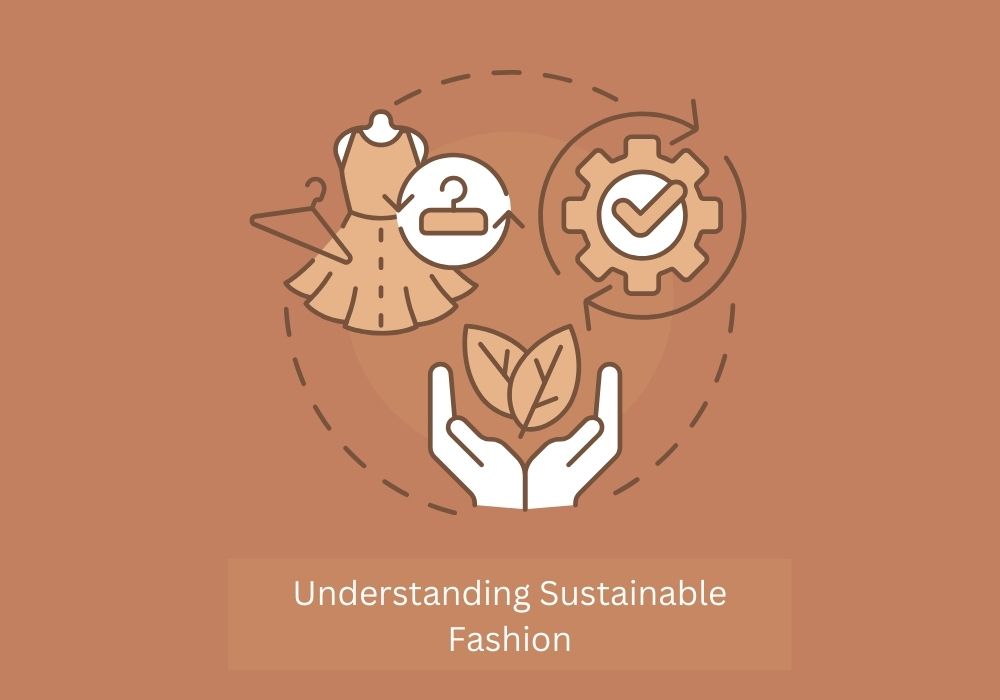
Understanding Sustainable Fashion
What Is Sustainable Fashion?
Sustainable fashion encompasses practices that reduce the environmental impact of clothing production and consumption. This includes everything from using eco-friendly materials to promoting fair labor practices. As Stella McCartney, a renowned fashion designer, puts it, “Sustainability is the future of fashion, and the future is now” (Source: Stella McCartney Website).
The Environmental Impact of Fashion
The fashion industry is one of the largest polluters in the world. A study by the Ellen MacArthur Foundation highlights the significant environmental costs, including water pollution, greenhouse gas emissions, and textile waste (Source: Ellen MacArthur Foundation). By making more sustainable choices, we can help mitigate these effects.
When I first learned about the environmental impact of fast fashion, I felt compelled to change my shopping habits. It wasn’t an overnight shift, but gradually, I started seeking out more sustainable options and found that I could still enjoy fashion without compromising my values.
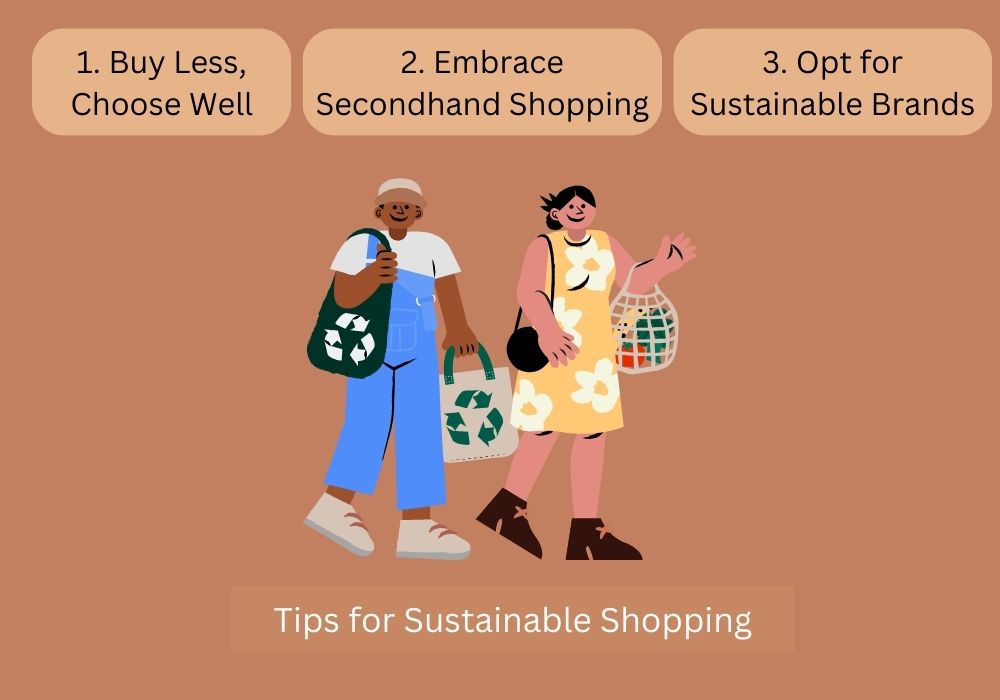
Tips for Sustainable Shopping
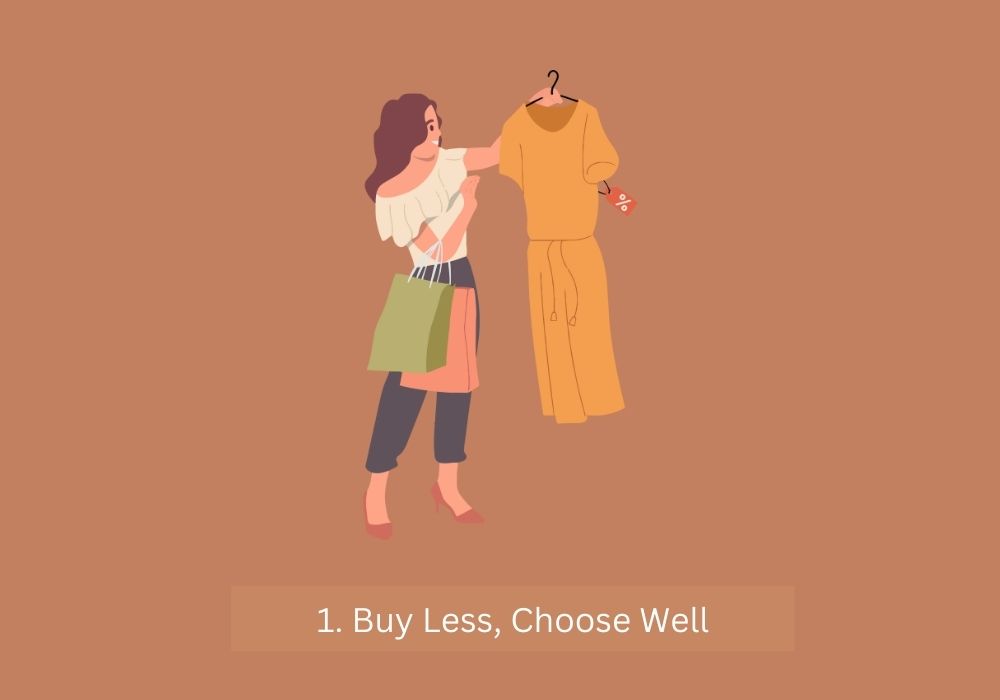
1. Buy Less, Choose Well
Livia Firth, founder of Eco-Age, advocates for a mindful approach to shopping: “Buy less, choose well, make it last” (Source: Eco-Age Website). This means investing in high-quality pieces that will last longer and reduce the need for frequent replacements.
Quality Over Quantity
Instead of buying multiple cheap items, invest in fewer, higher-quality pieces. These items often have better construction, are made from durable materials, and have timeless styles that don’t go out of fashion quickly.
I used to buy trendy, low-cost clothes, only to find they didn’t last beyond a season. After switching to quality over quantity, my wardrobe became more versatile and long-lasting, ultimately saving me money.
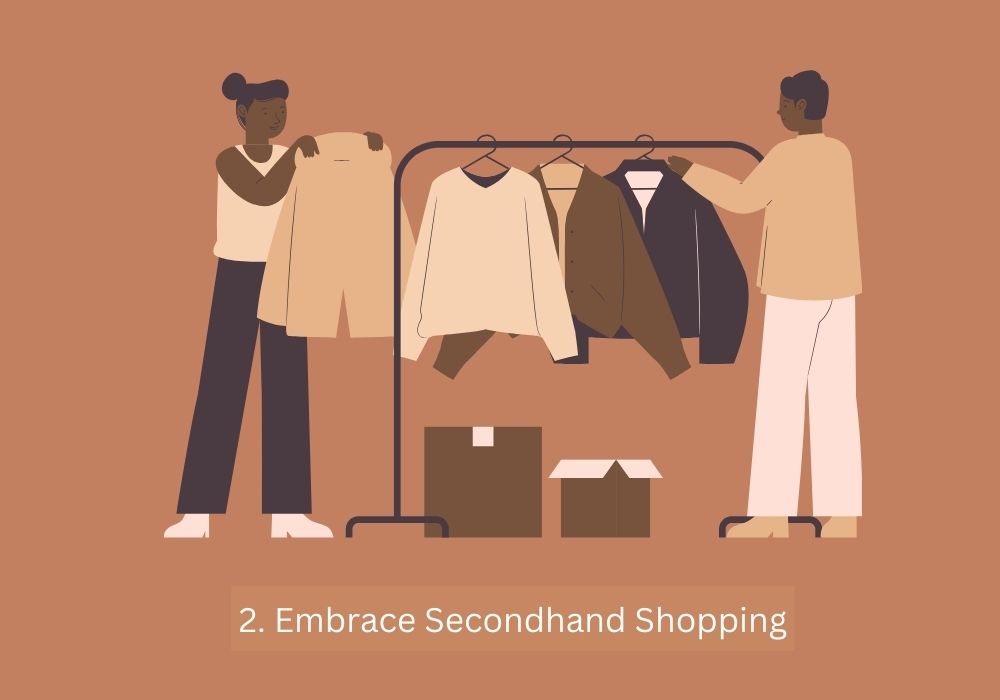
2. Embrace Secondhand Shopping
The Rise of Secondhand Fashion
Secondhand shopping is not only budget-friendly but also environmentally friendly. According to a report by ThredUp, the popularity of secondhand clothing is on the rise, with the potential to significantly reduce the fashion industry’s environmental impact (Source: ThredUp).
Where to Shop Secondhand
Thrift stores, consignment shops, and online platforms like Poshmark and Depop are excellent places to find stylish secondhand items. You can score unique pieces that you won’t find in mainstream stores.
One of my favorite pieces is a vintage leather jacket I found at a thrift store. It’s unique, has character, and I love telling the story of how I found it for a fraction of the price of a new one.
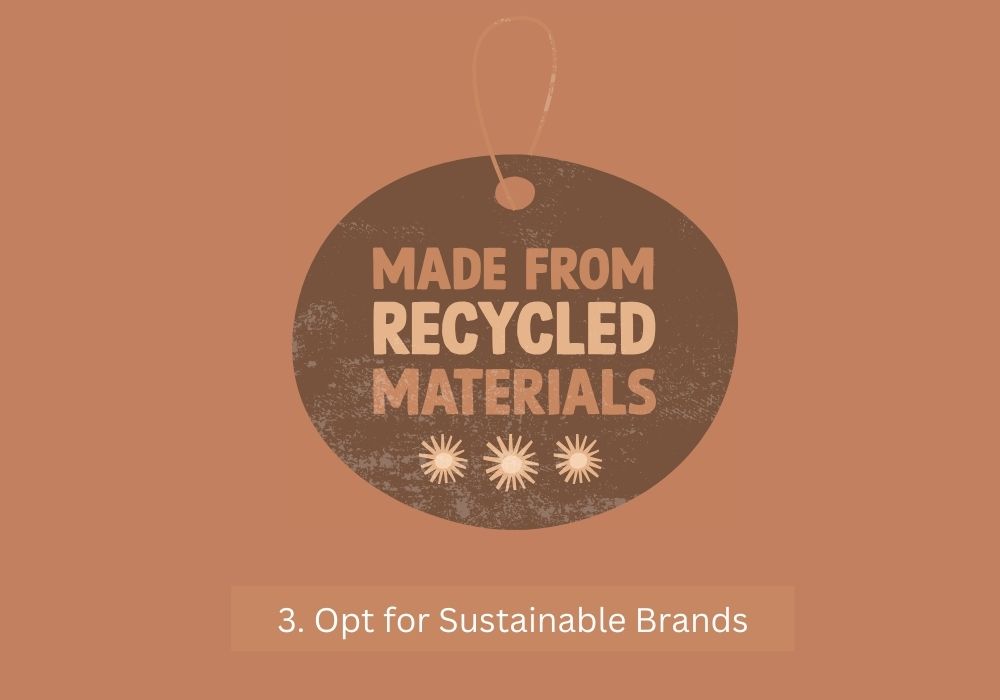
3. Opt for Sustainable Brands
Supporting Eco-Friendly Brands
Look for brands that prioritize sustainability in their production processes. These brands often use organic materials, employ fair labor practices, and implement eco-friendly manufacturing techniques.
Research and Resources
Websites like Good On You rate brands based on their sustainability practices, helping you make informed choices. Brands like Patagonia, Reformation, and Eileen Fisher are known for their commitment to sustainability.
Aja Barber, a writer and fashion consultant, emphasizes, “Sustainable fashion isn’t just about buying clothes made from organic cotton. It’s about changing our relationship with consumption” (Source: Aja Barber Website). This means supporting brands that align with these values.
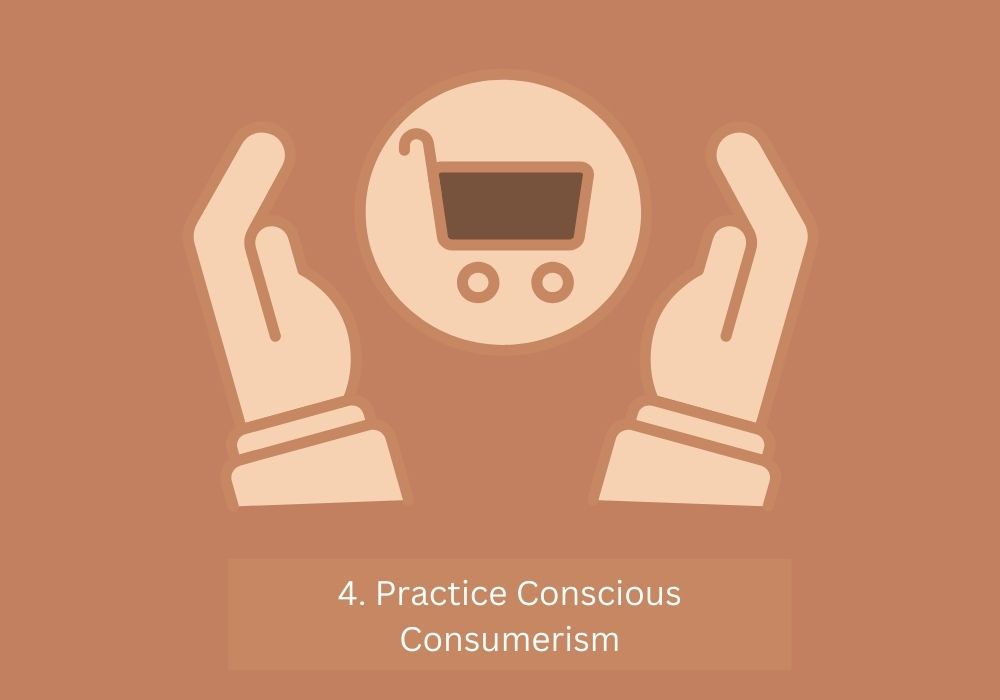
4. Practice Conscious Consumerism
Thoughtful Purchases
Before buying something new, ask yourself if you truly need it and how it fits into your existing wardrobe. Orsola de Castro, co-founder of Fashion Revolution, wisely notes, “The most sustainable garment is the one already in your wardrobe” (Source: Fashion Revolution Website).
Wardrobe Audits
Regularly audit your wardrobe to identify what you have, what you need, and what you can repurpose. This can help prevent unnecessary purchases and encourage you to get creative with what you already own.
I started doing wardrobe audits every few months. Not only does it help me stay organized, but it also reminds me of pieces I’ve forgotten about, allowing me to mix and match in new ways.
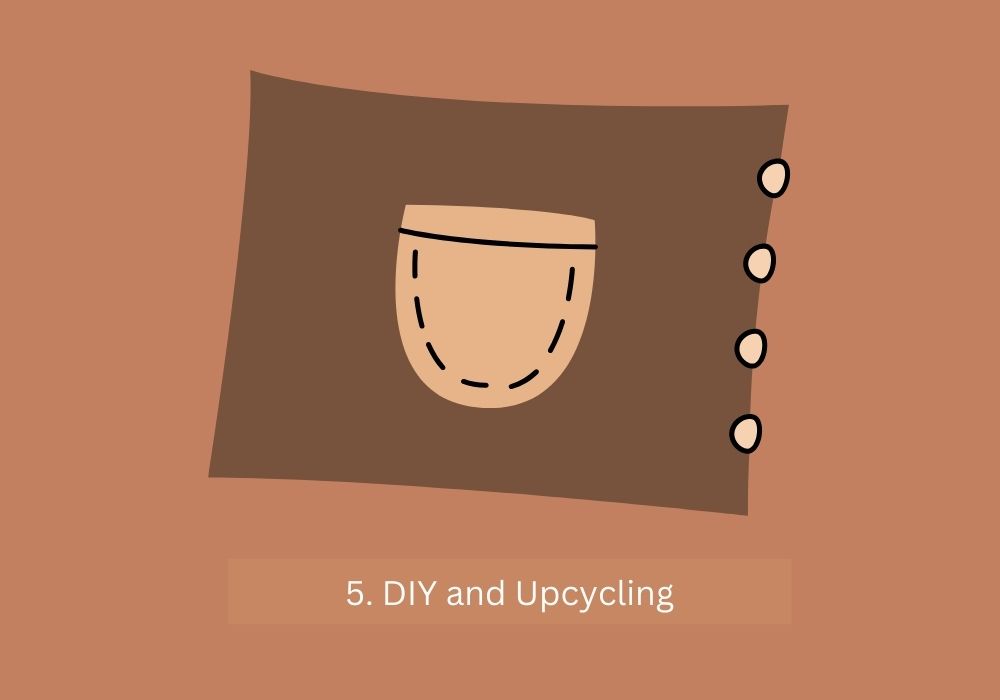
5. DIY and Upcycling
Get Creative
Upcycling old clothes into new creations is a great way to practice sustainability. You can transform outdated pieces into something trendy and unique with a bit of creativity and some basic sewing skills.
Easy Upcycling Projects
Start with simple projects like cutting jeans into shorts, adding patches to jackets, or turning old t-shirts into tote bags. There are numerous online tutorials to guide you through various upcycling techniques.
Clare Press, Sustainability Editor-at-Large for Vogue Australia, suggests, “Sustainable fashion is a journey, not a destination. It’s about making small changes that add up to a big impact” (Source: Clare Press Website).
The Benefits of Sustainable Fashion
Environmental Benefits
Choosing sustainable fashion helps reduce the industry’s environmental footprint. By supporting eco-friendly brands and buying secondhand, you contribute to less pollution, reduced waste, and conservation of resources.
Economic Benefits
The Boston Consulting Group reports that sustainable fashion practices can lead to increased customer loyalty, enhanced brand reputation, and cost savings for businesses (Source: Boston Consulting Group). This shift benefits not just the environment but also the economy.
Personal Satisfaction
Sustainable shopping can also bring personal satisfaction. Knowing that your purchases are helping to protect the planet and support ethical practices can make you feel good about your fashion choices.
Switching to sustainable fashion has given me a greater sense of purpose and satisfaction. I feel proud to support brands that align with my values and to contribute, even in a small way, to a more sustainable future.
The Future of Sustainable Fashion
Growing Awareness
Awareness about the environmental and social impacts of fashion is growing. Consumers are becoming more informed and demanding better practices from brands. This shift is driving positive change in the industry.
Innovations in Sustainable Fashion
Technological advancements are making sustainable fashion more accessible and effective. Innovations in materials, such as biodegradable fabrics and eco-friendly dyes, are revolutionizing the way clothes are made.
The Role of Consumer Behavior
A study published in the Journal of Cleaner Production emphasizes that consumer attitudes and behaviors play a crucial role in the adoption of sustainable fashion practices (Source: ScienceDirect). By making conscious choices, consumers can drive demand for more sustainable products.
As we move forward, it’s essential to remember that sustainable fashion is not about perfection but progress. Clare Press reminds us that it’s about “making small changes that add up to a big impact” (Source: Clare Press Website).
Conclusion
Sustainable shopping is an empowering way to express your style while caring for the planet. By knowing your style, embracing secondhand shopping, supporting sustainable brands, practicing conscious consumerism, and getting creative with DIY and upcycling, you can build a fashionable and eco-conscious wardrobe. Remember, every small step counts towards a more sustainable future.
References
- Stella McCartney Website
- Eco-Age Website
- Fashion Revolution Website
- Aja Barber Website
- Clare Press Website
- Ellen MacArthur Foundation
- Journal of Cleaner Production
- Journal of Fashion Marketing and Management
- ThredUp
- Boston Consulting Group
By incorporating these sustainable practices into your shopping habits, you can enjoy fashion in a way that is both stylish and responsible. Happy sustainable shopping!
